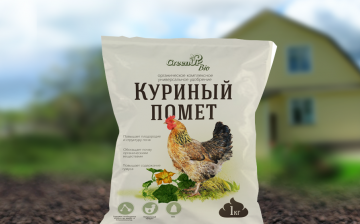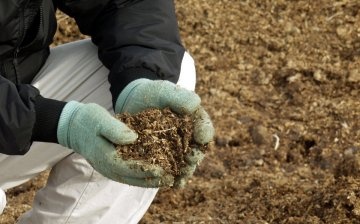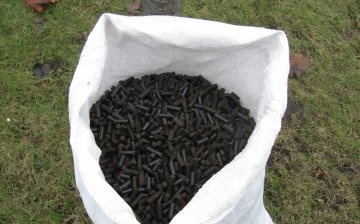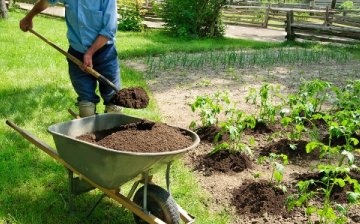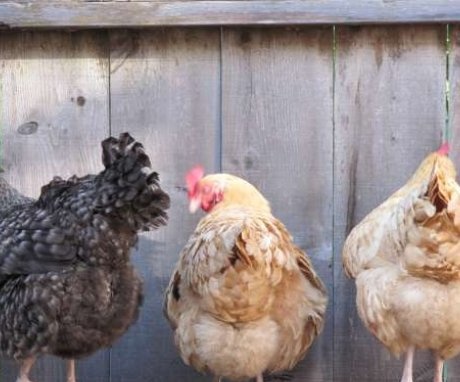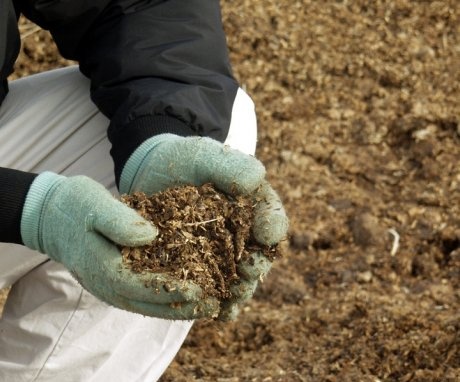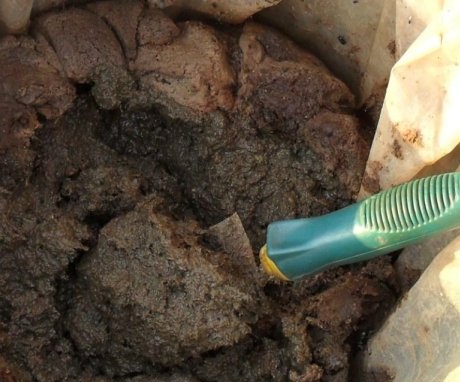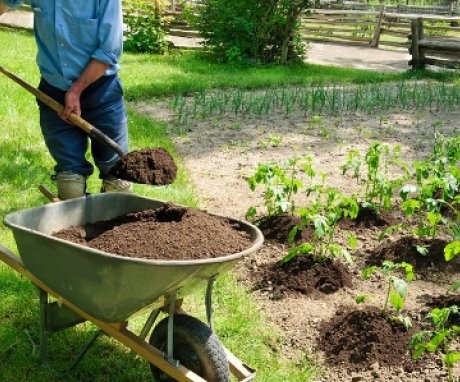Chicken droppings: correct use for the garden and vegetable garden
Most people involved in the cultivation of fruit and vegetable crops have now begun to give preference to natural ingredients used as fertilizers in their summer cottages. Chicken manure is considered one of the most effective fertilizers and is successfully used by many gardeners.
Content:
- Fertilization benefits
- Features of the use of chicken manure
- Types of feeding from chicken manure
- Application for the garden
- Application for the vegetable garden
Fertilization benefits
Chicken manure is recognized as the leader among poultry litters in terms of nitrogen content, which is vital for the normal development and growth of plants. In general, chicken manure contains three times more nutrients than cattle manure. The structure of chicken manure includes nitrogen, phosphorus, potassium, calcium, manganese, copper, cobalt, zinc.
Even a single feeding of plants with this fertilizer increases crop yields for two years.
This is due to great concentration. mineral substances in the droppings and their gradual, extended in time, their transition into the soil. Chicken manure can be used in different forms (liquid, dry, granular) depending on the needs of the crop, to improve the quality of any type of soil and to feed any plants.
The use of chicken droppings as fertilizer causes active plant growth and rapid formation of ovaries. The results of feeding can be seen within a couple of weeks after the introduction of the manure into the soil.
Features of the use of chicken manure
The main feature of this fertilizer is that pure chicken manure cannot be used. It is a highly caustic mixture that contains poultry waste products (metabolites) and can simply burn plants. Fresh droppings contain uric acid, a large amount of which inhibits plant growth. Over time, uric acid in the soil converts to ammonium carbonate, which in turn forms nitric acid.
Therefore, by the end of the growing season, plants receive an increased dose of nitrogen, which contributes to the accumulation of nitrates in fruits. It should be noted that during storage, ammonia gas is released from chicken manure, and the fertilizer turns into poison. To avoid this phenomenon, it is recommended to dry the droppings in the open air by adding peat to it.
Dry droppings can be stored in plastic containers, providing a supply of fresh air.
Fresh chicken manure contains too much nitrogen and can also cause plant death. Dry droppings are crushed and mixed with humus or earth. A good solution is to add chicken manure to the compost, which will result in a great nitrogen-rich humus.
You can prepare compost as follows:
- Lay out a layer of wood on a small plot of land sawdust.
- Then a layer of chicken droppings 20cm.
- Alternate sawdust layer - litter layer.
- The height of the pile can be up to 1 meter.
- You can cover it with a layer of straw or soil on top to reduce the unpleasant odor.
- In a month and a half or two, the compost will be ready.
The main rule when using chicken manure as fertilizer is to observe the measure. With the correct application of manure, like any other fertilizer, the results will not be long in coming.
In excess, it can harm plants.
Chicken manure is not a universal fertilizer for all plants: some crops, such as potatoes, for a good harvest, potassium fertilization is required. In this case, it is recommended to add 100 grams of potassium chloride for each kilogram of chicken manure. Thus, when using chicken manure as fertilizer, it is important to follow agricultural practices. cultivation cultures.
Types of feeding from chicken manure
Gardeners often use top dressing liquid chicken droppings. To do this, fresh droppings are diluted in water in a ratio of 1 liter of droppings to 15-20 liters of water. It is best to water the plant droppings immediately after rain or a few hours after watering. The remaining solution can be poured into a compost heap. Liquid top dressing allows you to accurately dose the fertilizer and, in addition, strictly observe the timing: in the initial growing season, otherwise you can get a lot of tops or a crop oversaturated with nitrates.
You can prepare a concentrated litter infusion that is suitable for long-term storage and use it throughout the season:
- Chicken droppings and water are taken in a 1: 1 ratio.
- The container with the solution is closed and left for several days in a warm place.
- The prepared infusion is diluted before use in a proportion of 1 liter of infusion per bucket of water.
Dry chicken manure is usually introduced into the soil in the fall when digging a vegetable garden. Dry droppings are moistened and added to the soil in a ratio of 0.5-1 kg per square meter of soil. It is useful to add compost, sand and wood ash to the droppings. This will help to avoid an overdose of minerals in one place and a shortage in others. Spread the mixture evenly over the beds, level the soil and leave until spring.
Granular chicken manure has many advantages:
- It is stored for a long time without losing its useful qualities.
- There is no unpleasant smell.
- Compact, granules grow in size on contact with water.
- There is no risk of infecting plants with diseases and pests.
- Missing seeds weeds.
- After opening the package, it retains its properties for six months.
Litter in granules is used at the rate of 100 to 300 grams per square meter of soil. It is important that the pellets do not come into contact with either the plants or the seeds.
The nitrogen contained in the pelleted manure is quickly converted into mineral soil. Therefore, it is not recommended to apply it in the fall to avoid washing out.
Chicken manure purchased in a specialty store is quite expensive, however, in the end, the purchase will fully justify itself.
When buying, it is better to give preference to dry droppings.
Indeed, if stored improperly, nitrogen turns into ammonia. If you keep chickens on the farm, excellent fertilizer will come for free. In addition to litter, you can also use bedding, which many simply throw away. The litter content in the litter is not very large, so it can be scattered around trees and shrubs without risk. Another plus of using bird bedding is soil mulching.
The litter is made from chopped straw or dry peat in a layer of 30 centimeters, adding as droppings accumulate. When the litter is half a meter high, it can be replaced. Litter litter is converted to compost under the influence of moisture, insects and sunlight, and nutrients gradually penetrate into the soil.
Application for the garden
In the spring, upon awakening, trees and shrubs need nitrogen fertilizers to recover from winter and active growth. It is nitrogen, as mentioned earlier, that chicken manure contains in excess.
When using chicken manure for feeding fresh trees and shrubs, you need to use a solution in a ratio of 1: 15. It is recommended to apply the solution at a distance from the plant on the near-stem circle so that fertilizer does not get on the roots extending from the trunk. For one adult fruiting tree per season, one bucket of manure is introduced into the soil per season; for seedlings, the volume is reduced to a third of the bucket.
For fruiting shrubs (currant, gooseberry) make half a liter of solution per square meter of soil.
Before fertilizing, the soil should be watered abundantly. If the near-trunk circumference is not tinned, you can make grooves along the edge of the crown of the tree and add a solution of chicken droppings to them. Using litter litters with droppings greatly reduces the risk of root burns and mineral overload. The litter is scattered near trees and shrubs, left for a couple of days to dry, then watered. This feeding method can be used three to four times per season.
Granulated droppings are applied directly during tree planting and during growth, lightly sprinkling the granules with earth. The main thing is to avoid direct contact of the roots with the granules.
Application for the vegetable garden
The technology of using chicken manure when feeding vegetable crops is strikingly different from fertilizing trees and shrubs:
- Oversupply for small plants fertilizers can be disastrous.
- Pathogenic microorganisms and insects living in the droppings can move to the leaves and fruits and spoil the crop.
- Therefore, soil fertilization with chicken manure for growing vegetable crops is most often carried out several months before planting.
- Consumption rates of dry chicken manure for fertilizing vegetable crops - no more than 50 grams per square meter of soil.
- The soil is watered with a solution of chicken manure at the rate of 0.5 or 1 liter per plant. It is important to note that such a solution cannot be stored for more than two days, since ammonia begins to be released from it, and the fertilizer turns into poison.
On the beds intended for growing berries, it is recommended to apply chicken droppings three months before planting or from the second half of winter before the plants awaken. A solution of droppings is shed between the rows, avoiding getting on the roots. In the spring, you need to use a very weak solution, at the rate of 1 liter of litter infusion per 20 liters of water.
When growing strawberry feeding with chicken droppings is used once a year to prevent oversaturation of the soil with nitrates. Crops such as tomato, cabbage, eggplant. Garlic, onion and greens can be fed only at the beginning of growth.
Chicken droppings have a very beneficial effect on productivity. strawberry, potatoes and grapes.
Recommendations for the dosage of chicken manure when feeding the main vegetable crops per square meter during the main tillage:
- Cabbage - 3kg of litter in spring or autumn or 2kg of clean droppings.
- Tomatoes and pumpkin - 6-8 kg of litter in spring or 3-4 kg of clean droppings.
- Root crops - 3.5 kg of litter or 2.5 kg of pure droppings only in autumn.
- Green crops, onion, garlic - 3 kg of litter or 2 kg of clean droppings in the fall.
- Potato - 4 kg of litter in spring.
When feeding during the growth period with a solution:
- Cabbage - 1 liter three times per season per plant.
- Tomatoes and pumpkin seeds - 5 liters per square meter.
- Root crops - 3 liters per square meter.
- Onions, garlic - 1 liter per square meter.
- Potato - no liquid feeding is done.
More information can be found in the video.



